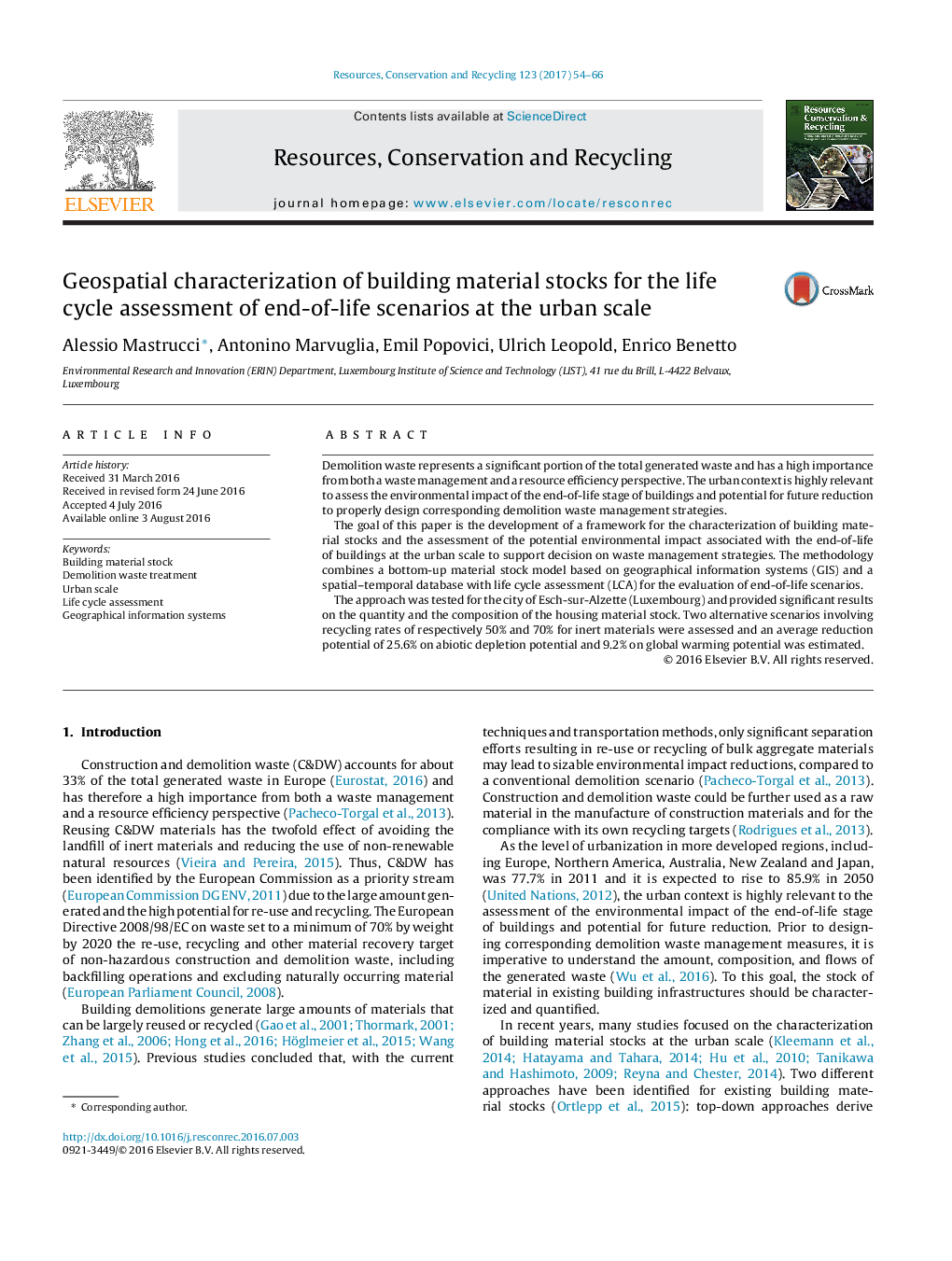| Article ID | Journal | Published Year | Pages | File Type |
|---|---|---|---|---|
| 5118820 | Resources, Conservation and Recycling | 2017 | 13 Pages |
â¢A bottom-up framework to assess the end-of-life of urban building stocks is proposed.â¢The building material stock is characterized using geospatial data and processing.â¢Integration with life cycle assessment allows for evaluating end-of-life scenarios.â¢Potential end-of-life impacts are assessed building-by-building for one entire city.â¢The framework can support decision-making on demolition waste treatment policies.
Demolition waste represents a significant portion of the total generated waste and has a high importance from both a waste management and a resource efficiency perspective. The urban context is highly relevant to assess the environmental impact of the end-of-life stage of buildings and potential for future reduction to properly design corresponding demolition waste management strategies.The goal of this paper is the development of a framework for the characterization of building material stocks and the assessment of the potential environmental impact associated with the end-of-life of buildings at the urban scale to support decision on waste management strategies. The methodology combines a bottom-up material stock model based on geographical information systems (GIS) and a spatial-temporal database with life cycle assessment (LCA) for the evaluation of end-of-life scenarios.The approach was tested for the city of Esch-sur-Alzette (Luxembourg) and provided significant results on the quantity and the composition of the housing material stock. Two alternative scenarios involving recycling rates of respectively 50% and 70% for inert materials were assessed and an average reduction potential of 25.6% on abiotic depletion potential and 9.2% on global warming potential was estimated.
